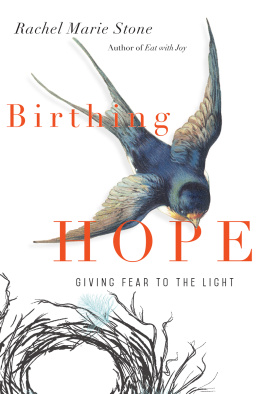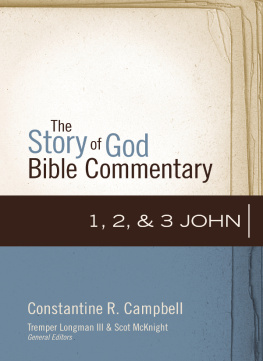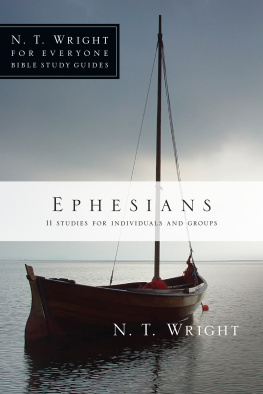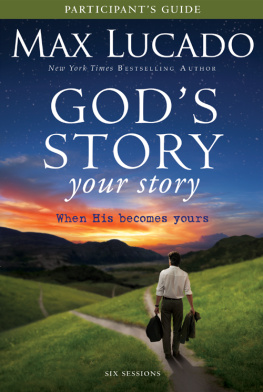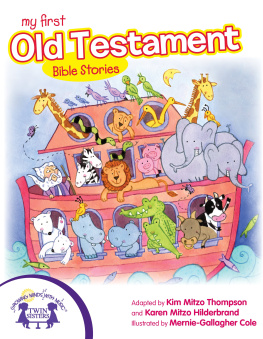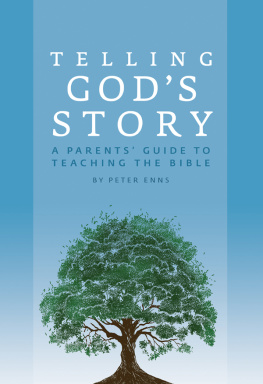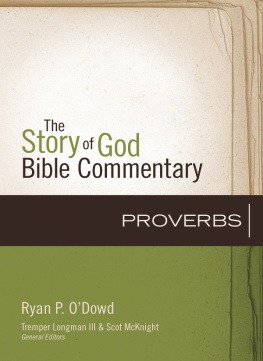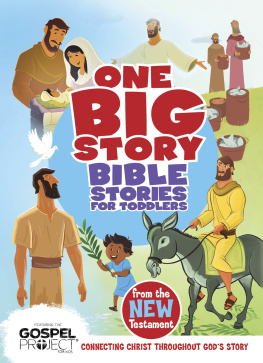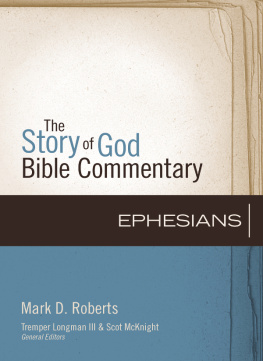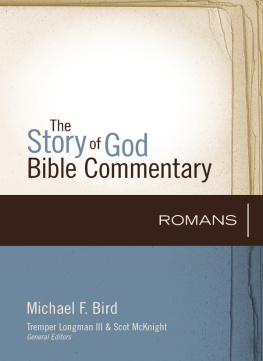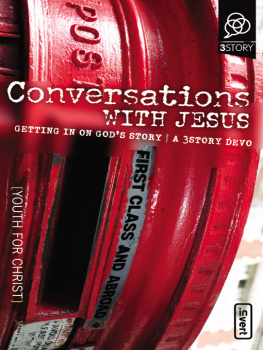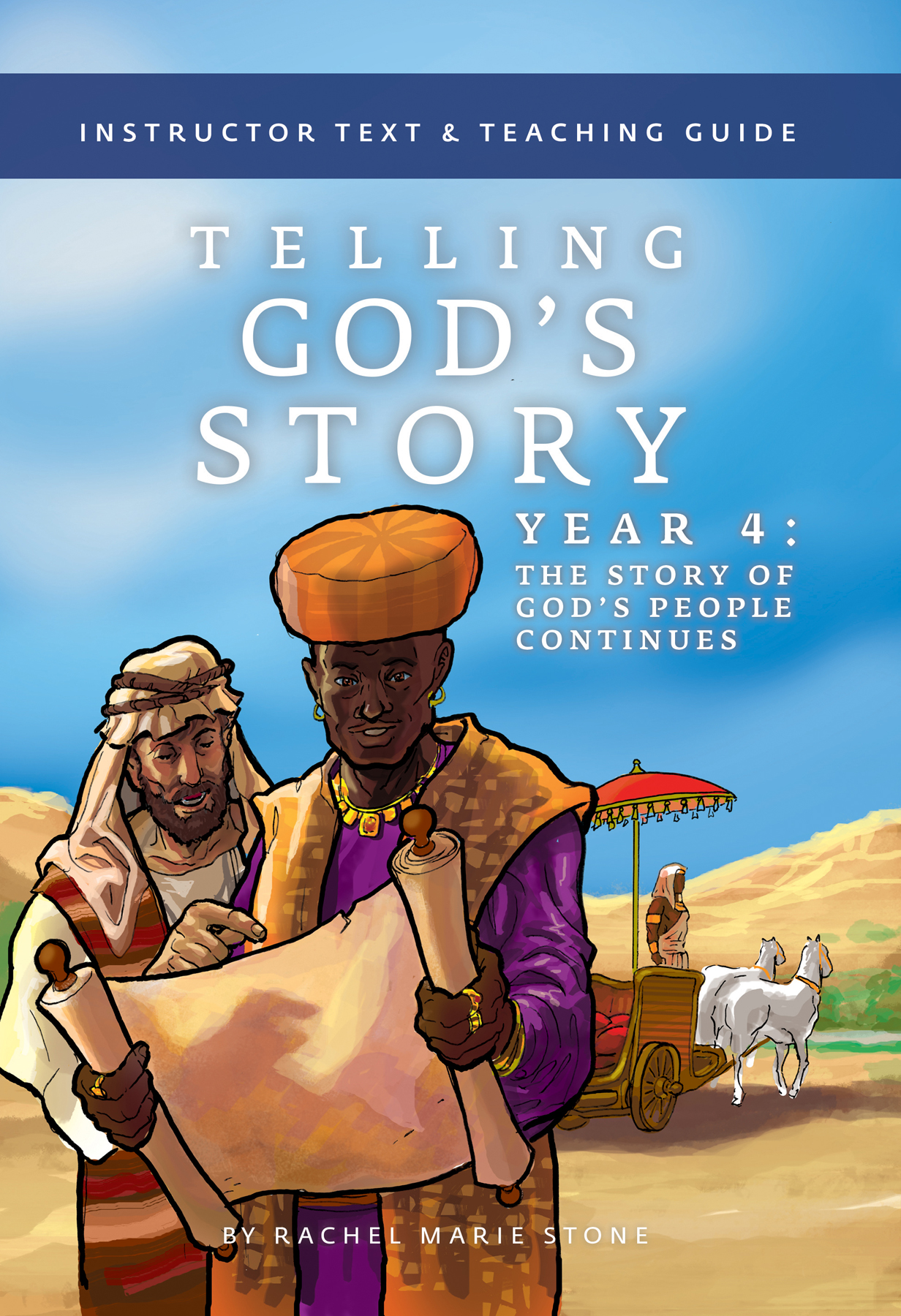Contents
Guide
Page List
TELLING GODS STORY
YEAR FOUR: THE STORY OF GODS PEOPLE CONTINUES
INSTRUCTOR TEXT AND TEACHING GUIDE
RACHEL MARIE STONE
Olive Branch Books
Charles City, Virginia
For my childrenand for all of Gods children.
Table of Contents
M y first class in graduate school was Medieval English Drama. We studied the mystery playsmostly those known to us today as the York Mystery Plays, which you can still see performed in some places throughout the world. For ordinary medieval people, many if not most of whom were largely illiterate, the mystery plays depicted the drama of humanitys life with God from Creation to the Last Judgment, and they depicted it with humor, reverence, and, sometimes, with astonishing insight. I was surprised by the unusual emphases and interpretations the plays offered.
It was astonishing, for example, to see that when God banished Adam and Eve from the Garden of Eden, he sent them to middle-earth. What could that mean? Perhaps, some suggested, middle-earth is simply where medieval English people imagined themselves living: not below in hell, nor above in heaven, but in the middle, on the earthmiddle-earth.
But perhaps, as well, Adam and Eves expulsion to middle-earth signified something else in the imaginations of these medieval theater folk. For Adam and Eve, like us, live between the timesbetween the paradise of Eden and the joy of the New Jerusalem. Perhaps even the play depicting the banishment from the garden suggested a kind of mercy: the mercy of the creation of time where there had once been eternity. Rather than being eternally damned, Adam and Eve were given the mercy of time, in which Gods redemption would be revealed.
This volume of Telling Gods Story takes place in a similar sort of middle-earth. Jesus departs, but rather than signifying tragedy and the end of the story of Gods life with Gods people, it opens up another merciful window of timetime for the Gospel to spread throughout the earth, time for more people to be gathered into the family of God. And in this middle-earth setting, Jesus followers are given the job of extending Jesus workhis teaching, his healing, the hope of his resurrectionthroughout the earth, in anticipation of the time that is to come, when every tear is wiped away, and sorrow, tears, and death itself will be no more. The lessons in this book explore the mystery of living as Christians in the meantimethe in-between times.
A fuller explanation of the methods behind this program is found in the core text for this series, Telling Gods Story: A Parents Guide to Teaching the Bible.
Organization
The lessons for Year Four are centered on understanding the in-between timeswhat happens when Jesus leaves? How is his story continued? What does it mean to live in the way of Jesus? The lessons are organized into ten units, each covering an important aspect of the New Testament:
Aim to complete one lesson per week. This book is designed to be used along with Telling Gods Story, Year Four Activity Book: Student Guide and Activity Pages, (available for download at welltrainedmind.com) which contains pictures, projects, and other activities. You may wish to read the scripted lesson to the child on the first day as he or she colors the picture, and then complete projects on the second and third days. Alternately, you may read the scripted lesson on the first day, complete the coloring picture on the second, and complete a chosen project on the third. In a group setting that meets once a week, plan to read the scripted lesson as the students color and then to conclude the days study with one of the projects or games especially designed for group use. You may find it helpful to both open and close your work with the scripted lessons, or to invite children to retell the story after theyve heard it, perhaps using small figures or other manipulatives.
Each of these units comprises several lessons, which means that you will spend several weeks on each unit. The order is not unalterable, but neither is it random. We start with the story of Jesus departure and end with his Second Coming; and the middle is all about how Jesus followers did (and should) live in light of these two great events.
The first three units (Jesus Departsand God is Faithful, The Holy Spirit, and The Cost of Following Jesus) seek to form a link with Telling Gods Story, Year Three: The Unexpected Way, even as the book of Acts is really part of a two-volume setLuke-Acts. As Jesus departs, Gods presence abides in the coming of the Holy Spirit, who begins to dwell in Jesus followers, who continue his workand face persecution because of their faithfulness.
The fourth unit, Being a New Creation in Christ, along with the fifth and sixth, (Who is Paul? and The Good News is for Everyone!) delve into the question of what it means to be born again. Because Paul is the theologian of the early church who wrote extensively on this question, several lessons focus on the range of his teachings, including the important questions of For whom is the Gospel? and What must one do to be saved? The seventh unit addresses the related issues of the common life of the church: how Jesus followers learned to share responsibilities and resources, and how to deal with conflict.
The next two units, After Death and Last Things, explore, first, the centrality of Jesus resurrection to the Christian faith and its relationship to Christian hope: What has the Christian to fear if Jesus has conquered death? Last Things introduces children to the often confounding book of Revelation, but instead of the Hollywood-inflected sci-fi version found in some interpretations, these lessons interpret Revelation as a return to the Garden of Eden, which is transformed into the City of God that fills the whole Earth, where, at last, God dwells among people and death and sin are conquered once and for all.
The final unit, These Three Remain, concludes the course by helping students understand and cultivate the three essential virtues praised by Paul in I Corinthians 13 as the things that remain forever: Faith, Hope, and Love. The three lessons in this unit explore these often-misunderstood virtues and encourage children toward a lifelong journey of practicing them.
Even though the order of the lessons is intentional, you should feel free to alter the order to suit your own purposes, particularly if you are seeking to link your lessons with the lectionary readings or the Church Year more generally. , for example, could stand alone on Pentecost.
Each lesson opens with a brief word of explanation to the parent or teaching adult. These are more detailed and complex than the scripted lessons to be read aloud; think of them as mini-commentaries. Ive tried to include the major theological and critical questions that arise in each passagenot that these will necessarily be questions that the children will ask, but because they are things that Ive found good to know; things that have deepened my reading of Scripture and my understanding of Jesus.
All scriptural excerpts are drawn from the New International Version.
J esus followers were devastated when he died: it seemed impossible to them that he could actually have been the Messiah, the Anointed One of God, and yet suffer a shameful, criminals death.


